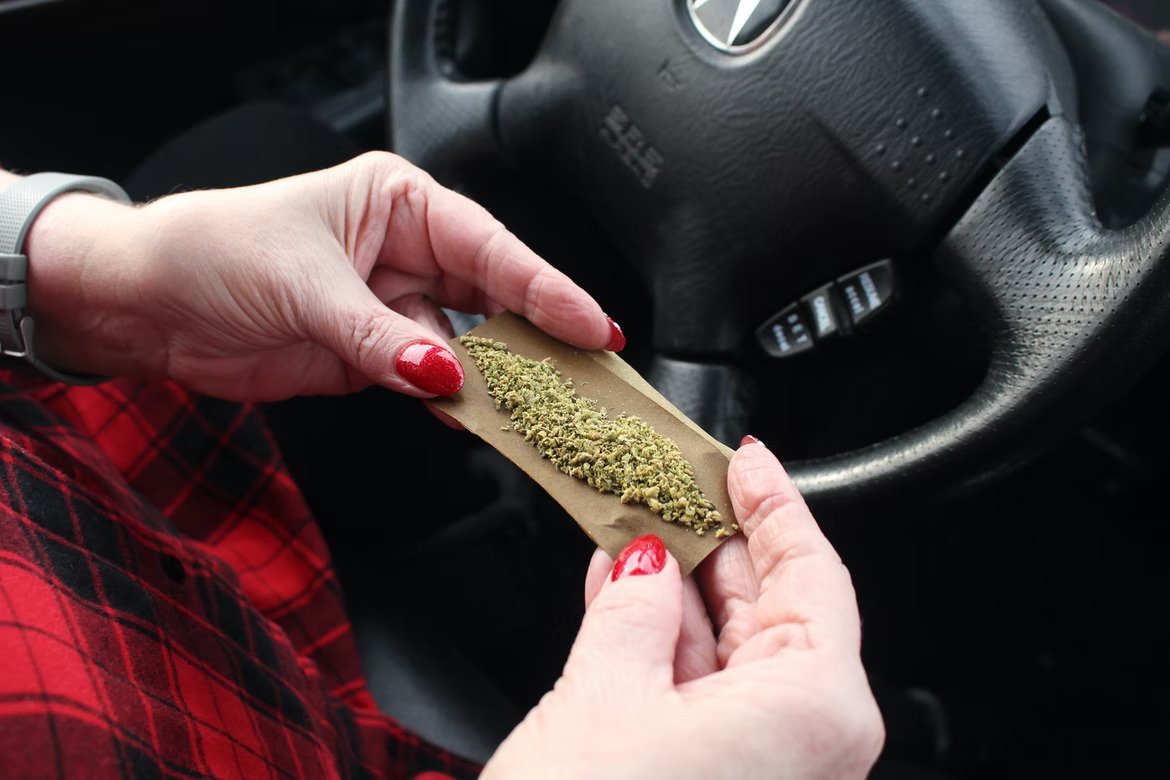You are here
Home 🌿 Marijuana Politics 🌿 Fast-tracking of pot legalization came with a cost on roads 🌿Fast-tracking of pot legalization came with a cost on roads

A study found that combining cannabis and alcohol impairs driving ability to a far greater extent than either substance used on its own does.
While the recent court case involving a Central Saanich man who struck and killed a woman and critically injured her sister almost four years ago was unfolding in Victoria, new findings on how cannabis affects people’s driving abilities were also being released.
In B.C. Supreme Court, Anthony Thomas pleaded not guilty to six driving offences, including impaired driving and dangerous driving causing the death of Kim Ward, 51, on Aug. 27, 2018, and impaired driving and dangerous driving causing bodily harm to her sister, Tracy Ward.
During the trial, an expert toxicologist testified that a blood sample taken from Thomas soon after the collision contained methamphetamine at a level consistent with a moderate-to-high single acute dose. The possible effects of the drug’s use on driving ability were described.
Cannabis is not among the drugs named during the trial. But the case raised the question of drug-impaired driving, with the judge’s verdict yet to come.
Looking at some of the cannabis-related studies published recently shows some of the progress made by Canadian research on the same question for marijuana.
One of the studies show that combining cannabis and alcohol impairs driving performance to a far greater extent than either substance used on its own does. Canadian researchers analyzed the results of 57 separate studies, representing about 1,725 participants. They found that cannabis and alcohol each produces different types of poor driving, but the effects of the two substances combined create even more dangerous levels of impairment.
Cannabis alone was found to affect driving performance similarly to low blood alcohol concentrations. It reduces drivers’ ability to stay in their lane, even though drivers under the influence of cannabis tend to slow their driving speed.
In contrast, alcohol use on its own increases driving speed and affects many more driving-performance indicators. These include increased number of crashes, weaving, leaving the driving lane, speed and speed variability, as well as reduced response times.
When combined, however, cannabis and alcohol impair drivers’ ability to maintain lane position more than either substance on its own.
In another study, published in October, University of Victoria researchers and U.S. counterparts showed that between 2000 and 2018, the percentage of car-crash deaths in the U.S. involving cannabis doubled, and the percentage of deaths involving both cannabis and alcohol more than doubled. The researchers also found that people who died in crashes involving cannabis were 50 per cent more likely to also have alcohol in their system.
The results are supported by a University of British Columbia study in January that showed THC is being detected in twice as many injured drivers in Canada since cannabis was legalized here.
THC is the compound in marijuana that gives the sensation of being high.
Before cannabis was legalized, 3.8 per cent of drivers had blood THC concentrations above the Canadian legal driving limit of 2 nanograms/ml. The percentage rose to 8.6 per cent after legalization. The proportion of drivers with concentrations of THC above 5 nanograms/ml more than tripled to 3.5 per cent post-legalization.
THC levels can soar to 100 nanograms or higher within 15 minutes of smoking. It may take as long as four hours for levels to drop back to the legal limit.
In an earlier study, the same researchers found little evidence that THC concentrations below 5 nanograms/ml increase the risk of motor vehicle accidents. However, they did find evidence that higher THC levels — above 5 nanograms/ml — increase that risk.
The problem, of course, is that marijuana legalization was fast-tracked in Canada for political purposes, not to support public health and safety. Because cannabis had long been classified as an illegal substance, little research had been done on how it affects the brain, what THC blood concentrations indicate impairment or how long the compound lingers in the body. Nor were tools available then to measure THC blood levels suitable for the purpose of delivering roadside sobriety tests.
Unlike the mantra we’ve been hearing this last month regarding COVID safety measures in B.C., the cannabis legalization process was not based on science or evidence.
And now, couched in the impersonal language of statistics and analyses provided by researchers, we’re beginning to see the impacts of cannabis’s quick legalization.
Just as Kim and Tracy Ward are individuals with families, friends, co-workers and clients, those cannabis-related statistics also represent real people.
420 Intel is Your Source for Marijuana News
420 Intel Canada is your leading news source for the Canadian cannabis industry. Get the latest updates on Canadian cannabis stocks and developments on how Canada continues to be a major player in the worldwide recreational and medical cannabis industry.
420 Intel Canada is the Canadian Industry news outlet that will keep you updated on how these Canadian developments in recreational and medical marijuana will impact the country and the world. Our commitment is to bring you the most important cannabis news stories from across Canada every day of the week.
Marijuana industry news is a constant endeavor with new developments each day. For marijuana news across the True North, 420 Intel Canada promises to bring you quality, Canadian, cannabis industry news.
You can get 420 Intel news delivered directly to your inbox by signing up for our daily marijuana news, ensuring you’re always kept up to date on the ever-changing cannabis industry. To stay even better informed about marijuana legalization news follow us on Twitter, Facebook and LinkedIn.




